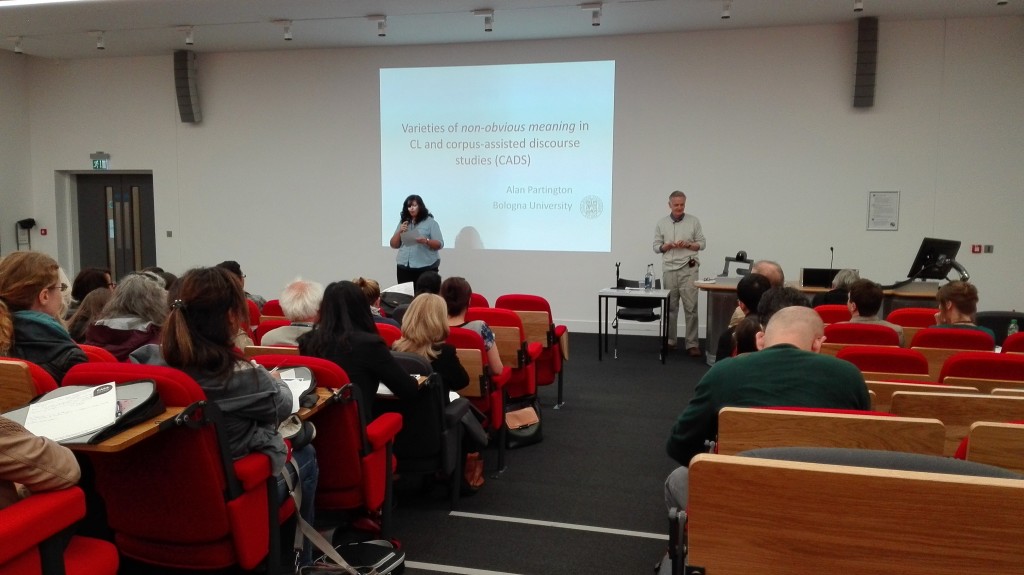Plenary session: Alan Partington
Non-obvious meaning in CL and CADS: from ‘hindsight post-dictability’ to sweet serendipity
Chair: Amanda Potts
http://www3.lingue.unibo.it/blog/clb/
Introspection & intuition
Processes of inference from the linguistic trace left by speakers/writers
Shared meaning
Idiom principle
Complexity of common grammatical items
Colligation: every word primed to occur in or avoid certain grammatical positions and functions (Hoey, 2005: 13)
SiBol (Siena-Bologna) corpus of newspapers, judicial inquiries, press briefings. Link.
Rapid language change
Corpus methodology is useful in detecting absence, not only presence
Language looks rather different when you look at a lot of it at once (Sinclair 1991)
Qualitative: anaphoric, historic, past behaviour
Quantitative anaphoric and cataphoric; enough data with which to infer
If primed >> psychologically fixed >> reproduced
Evaluation as prototypicality: inner circle obvious, outer circle non-obvious
Prosody can depend on grammar (Louw 1993), pov, literal vs figurative use and on field of register
Embedding is an important factor to interpret prosody
The added value of CL in discourse studies
Looking at language at different levels of abstraction: overview & close reading
Data are not sacred
Much of textual meaning is accretional
Positive cherry-picking: find counter examples
Almost all explanation in DA is informed speculation: in human science this is the closest you get to explanation
Moral panics have evolved over the years (globesity in 2015)
